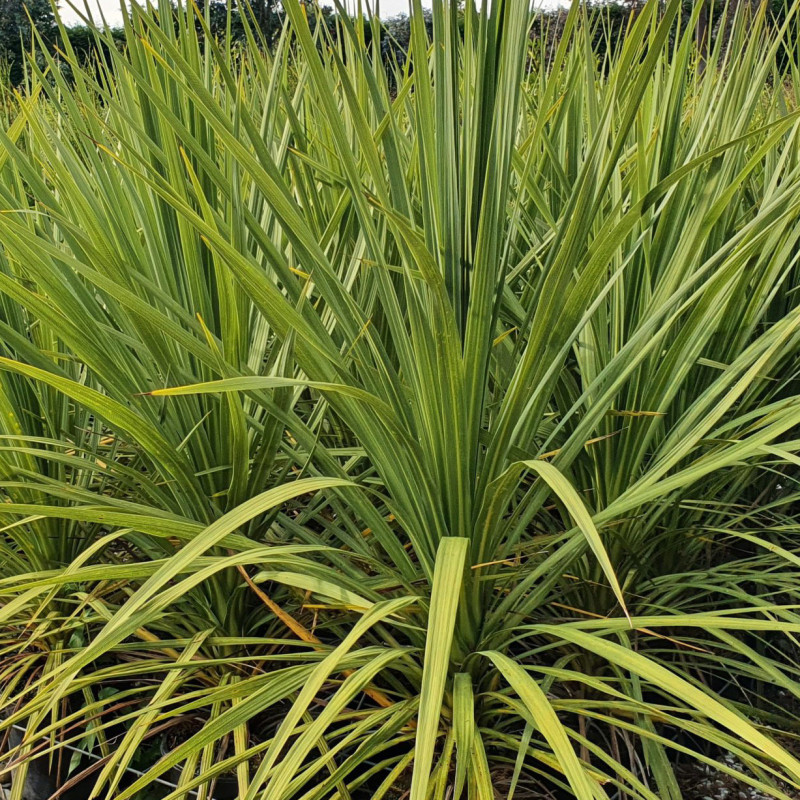Cordyline australis, commonly known as the cabbage tree, or by its Maori name of ti or ti kouka, is a widely branched monocot tree endemic to New Zealand. It grows up to 20 metres (66 feet) tall with a stout trunk and sword-like leaves, which are clustered at the tips of the branches and can be up to 1 metre (3 feet 3 inches) long. With its tall, straight trunk and dense, rounded heads, it is a characteristic feature of the New Zealand landscape. It is common over a wide latitudinal range from the far north of the North Island to the south of the South Island. It grows in a broad range of habitats. Known to Maori as ti kouka, the tree was used as a source of food, particularly in the South Island, where it was cultivated in areas where other crops would not grow. It provided durable fibre for textiles. Hardy and fast growing, it is widely planted in New Zealand gardens, parks and streets, and numerous cultivars are available. The tree can also be found in large numbers in island restoration projects, such as Tiritiri Matangi Island, where it was among the first seedling trees to be planted. It is also grown as an ornamental tree in higher latitude Northern Hemisphere countries with maritime climates, including parts of the upper West Coast of the United States, Canada and the British Isles, where its common names include Cornish palm, cabbage palm, Torbay palm and Torquay palm.

